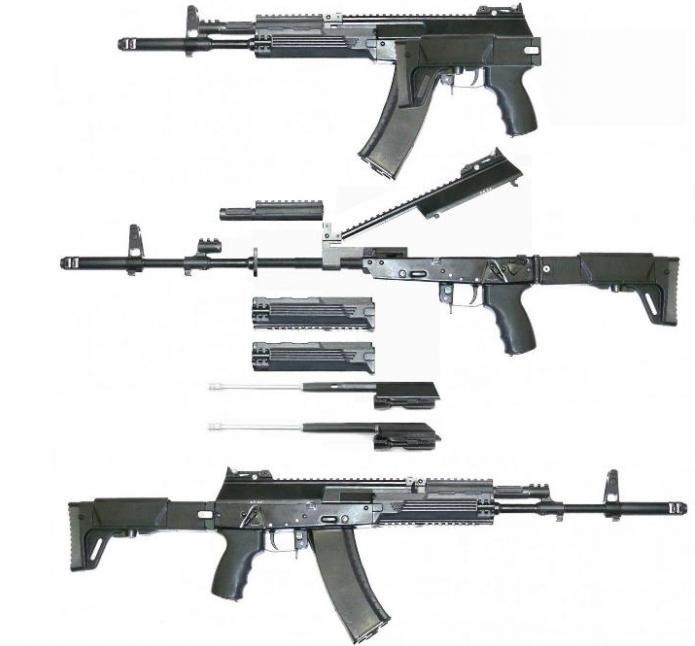We constantly hear that the Kalashnikov is a machine gun that has no equal, and it will not soon find an equivalent replacement. Such allegations run counter to the latest decisions of the Russian Ministry of Defense to refuse further procurement of these weapons, and the new Kalashnikov assault rifles (AK 12) are not even allowed to go public tests. Is this a short-sightedness of officials or is the machine gun really out of date? Let's try to figure it out.
Modern realities
No matter how good a weapon may be, it has its strengths and weaknesses. It is a successful combination of qualities that distinguishes outstanding samples. And, of course, AK possessed such a combination. Kalashnikov is an incredibly technological assault rifle, reliable and easy to operate, and also has powerful fire. Meanwhile, he also has drawbacks, such as, for example, the relatively low accuracy of automatic fire. Based on the experience of the Second World War, this shortcoming could not be considered significant, because in combined arms combat the fire was conducted by entire units, and the accuracy was not important, but the density of the fire. If accuracy were the prevailing quality of army small arms, then three-rulers and Mausers of the century before last would still be in service.

Meanwhile, the conditions of warfare are changing, and now grandiose battles like the Kursk Bulge are unlikely. As the experience of recent decades shows, armed struggle has moved to cities where the tremendous power of modern means of support is not so effective. And the battle in the city requires a compact, accurate and versatile weapon, that is, those qualities that the AK just does not possess. And here the argument that “Kalashnikov” is an automatic machine for a simple soldier does not work anymore, because the requirements for a modern soldier are not so simple as 30-40 years ago.
Development ways
Modern army small arms develops along the path of creating improved ammunition, the use of synthetic materials in the design and a denser layout of its components, as well as by achieving a high degree of versatility. The latter is achieved through the use of modular designs that allow you to change the combat characteristics of each individual sample depending on the combat mission or conditions. In addition, the military wants a machine with very accurate automatic fire (which is critical in the city), on which it would be possible to install optics, a grenade launcher and other auxiliary devices.
Kalashnikov - automatic today
Is it possible to upgrade the "old warrior" to modern requirements? The designers of the Izhevsk plant tried to answer this question in the affirmative and created a new Kalashnikov assault rifle - AK 12. But the words “created” and “new” somehow did not at all fit with their brainchild. They put Picatinny rail on the “old man”, screwed a new butt, made a new (two-sided) fire translator and subjected the barrel to more precise processing ... that’s all. But what about the "know-how" and requirements for modern weapons?!? One gets the impression that Izhmash decided: “And it will do ...” In general, the AK 12 was not only no better than its prototype, but also more expensive. Well, the designers were given time to fine-tune the machine before the start of state tests, but it is very doubtful that in two months they will be able to make fundamental changes to the design. All other things being equal, the AEK 971 submachine gun named after Degtyarev plant with its balanced automation looks much more preferable for the military, and it has room for modernization.